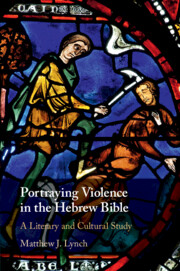Book contents
- Portraying Violence in the Hebrew Bible
- Portraying Violence in the Hebrew Bible
- Copyright page
- Publisher’s note
- Dedication
- Contents
- Acknowledgements
- Abbreviations
- Introduction
- Part I Violence and Ecology
- Part II Violence and Moral Speech
- Part III Violence and Justice
- Part IV Violence and Impurity
- Conclusion
- Appendix
- Bibliography
- Index
Part IV - Violence and Impurity
Published online by Cambridge University Press: 06 May 2020
- Portraying Violence in the Hebrew Bible
- Portraying Violence in the Hebrew Bible
- Copyright page
- Publisher’s note
- Dedication
- Contents
- Acknowledgements
- Abbreviations
- Introduction
- Part I Violence and Ecology
- Part II Violence and Moral Speech
- Part III Violence and Justice
- Part IV Violence and Impurity
- Conclusion
- Appendix
- Bibliography
- Index
Summary
The impurity of violence constitutes our fourth ‘grammar’ for speaking about the problem of violence across the Hebrew Bible. According to several biblical texts, shed blood defiles. Objects of this defilement include land, humans, and, in some instances, the divine name itself. Examples of bloodshed’s defiling capacities appear variously across Priestly and Priestly inspired texts in Leviticus, Numbers, and Ezekiel, though the conception itself ranges more widely in the Hebrew Bible. According to the author of Lamentations 4, for instance, Israel’s prophets and priests became polluted because they ‘shed [innocent] blood in the midst of [Zion]’ (4:13–14). The psalmist states that the Israelites had ‘poured out innocent blood … and the land was polluted’ (Ps 106:39). Isaiah proclaims that the people had ‘shed blood on [their] hands’ and therefore their sacrificial offerings were rejected (1:15).
- Type
- Chapter
- Information
- Portraying Violence in the Hebrew BibleA Literary and Cultural Study, pp. 219 - 260Publisher: Cambridge University PressPrint publication year: 2020

